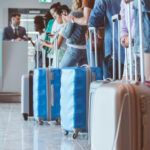Planning a family adventure to Brazil? Known for its vibrant culture, stunning beaches, and lush rainforests, Brazil is a dream destination for many. However, like any international travel, it’s crucial to be aware of the current safety landscape. This Brazil Travel Advisory provides essential information to help you make informed decisions and ensure a safe trip for your family.
The U.S. Department of State advises exercising increased caution in Brazil due to crime. Certain areas pose a higher risk, and it’s vital to understand these risks before you go. Violent crime, including armed robbery, carjacking, and even murder, is a serious concern in Brazilian cities, affecting both locals and tourists, day and night. Gang activity and organized crime are prevalent in many areas. Travelers should also be aware of assaults, sometimes involving sedatives or drugs in drinks.
For these reasons, the advisory specifically recommends against travel to certain regions and locations within Brazil:
Do Not Travel Zones:
- Border Regions: Avoid all areas within 150 km (100 miles) of Brazil’s borders with Venezuela, Colombia, Peru, Bolivia, Guyana, Suriname, French Guiana, and Paraguay. This widespread warning is due to high crime levels in these border zones. It’s important to note that this restriction does not include the popular Foz do Iguacu National Park or Pantanal National Park, which are considered safer for tourists.
- Informal Housing Developments (Favelas, Vilas, Comunidades, Conglomerados): Under no circumstances should you enter these areas, commonly known as favelas, at any time of day. Despite guided tours sometimes operating, neither tour operators nor local police can guarantee your safety. The security situation in these communities can change rapidly and unpredictably. Even areas perceived as safe can quickly become dangerous. Be cautious even in areas surrounding favelas, as violence can spill over.
- Brasilia’s “Satellite Cities” at Night: Avoid traveling to Brasilia’s administrative regions of Ceilandia, Santa Maria, Sao Sebastiao, and Paranoa during non-daylight hours (6:00 p.m. to 6:00 a.m.). Crime rates significantly increase in these areas after dark.
If You Decide to Travel to Brazil:
While the advisory highlights serious risks, it’s still possible to have a safer trip to Brazil by taking precautions. Here’s what you should do if you choose to travel:
- Stay Alert: Be constantly aware of your surroundings. Vigilance is your first line of defense against crime.
- Don’t Resist Robbery: If you are unfortunately targeted by robbers, do not physically resist. Your safety is more important than your belongings.
- Be Wary of Food and Drinks: Never accept food or drinks from strangers. Drink spiking is a known issue.
- Nighttime Caution: Exercise extreme caution when walking or driving at night. Crime rates escalate after dark.
- Avoid Solo Nightlife: Don’t go to bars or nightclubs alone, especially at night.
- Beaches After Dark: Avoid walking on beaches after dark. These areas can become deserted and dangerous.
- Minimize Displays of Wealth: Do not wear expensive jewelry or watches that could make you a target for thieves.
- ATM and Bank Vigilance: Be extra careful when using ATMs or visiting banks. These are common locations for robberies.
- Transportation Hubs & Public Transport: Use caution at major transportation centers (bus stations, airports) and on public transportation, particularly at night. Municipal buses are considered high-risk due to robbery and assault. U.S. government personnel are discouraged from using municipal buses throughout Brazil due to these risks.
- Hiking Safety: If hiking in isolated areas, exercise increased caution and ideally hike in groups.
Staying Informed and Prepared:
- STEP Enrollment: Enroll in the Smart Traveler Enrollment Program (STEP) to receive travel alerts and make it easier for the U.S. embassy to locate you in an emergency.
- Follow Official Channels: Stay updated by following the Department of State on Facebook and Twitter.
- Review Security Reports: Read the Country Security Report for Brazil for more in-depth information.
- Contingency Plan: Prepare a contingency plan for emergency situations and review the Traveler’s Checklist.
- Health Information: Consult the CDC page for the latest Travel Health Information related to Brazil.
Traveling to Brazil with your family can be an incredible experience, but it’s essential to be fully informed about the safety risks. By understanding the Brazil travel advisory and taking appropriate precautions, you can minimize risks and enjoy your trip more confidently. Always prioritize safety and stay updated on the latest travel advice before and during your travels.

